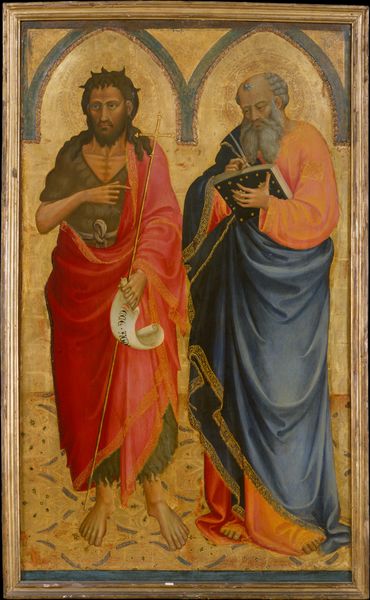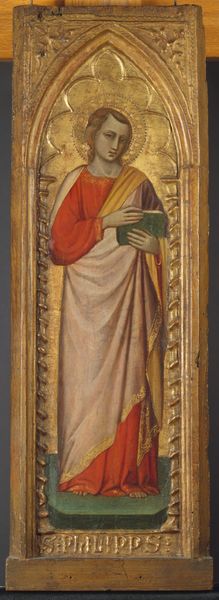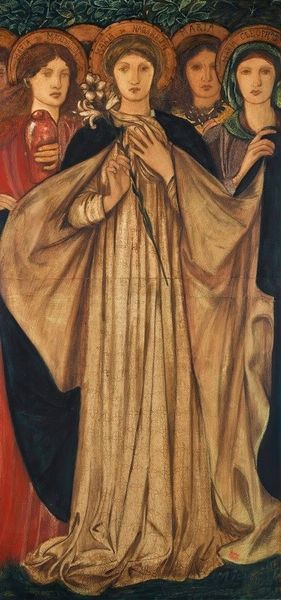
Saint Giustina of Padua from an Augustinian altarpiece 1450 - 1475
0:00
0:00
painting, oil-paint
#
portrait
#
painting
#
oil-paint
#
painted
#
figuration
#
oil painting
#
history-painting
#
italian-renaissance
#
early-renaissance
Dimensions: Panel: 126.2 × 31.9 cm (49 5/8 × 12 9/16 in.); Painted Surface: 119.5 × 25.5 cm (47 × 10 in.)
Copyright: Public Domain
Curator: The stillness in this portrait is quite striking, isn’t it? Editor: Yes, it’s very somber. The color palette feels constrained, lending a gravity to the figure, though it's not quite mournful. Curator: Let’s dive into a bit more context. Here we have Saint Giustina of Padua, an oil-on-panel piece hailing from an Augustinian altarpiece. It was created sometime between 1450 and 1475, and while the artist remains anonymous, the artwork resides here at the Art Institute of Chicago. Notice how the patterns on the floor contrasts to her solid presence, it creates space! Editor: I'm intrigued by the material contrast itself. Look at how the smoothness of her face and hands differs from the fabric, and then compared to the patterned gold detailing—all made possible through layered oil paint application. Curator: Speaking of layers, it would be interesting to investigate the workshop dynamics behind this. How much was executed by assistants versus the master, and how did that division of labor influence the final composition? Editor: While valuable, the art speaks for itself. There’s an undeniable geometry at play here. Note the vertical emphasis in her robe against the background, yet offset subtly by the black-and-white tile. And it draws you into a formal play of shadow and light across her face, which is exquisite in execution. Curator: What of the social pressures bearing down on both artist and subject? Saint Giustina represents piety and religious authority, of course, but was the artist consciously or unconsciously imbuing her with some kind of veiled statement regarding female labor or status at the time? Editor: I see what you're saying, but I disagree; imposing those contemporary sociological assumptions risks anachronism. What's undeniable is how the semiotic of colors impacts our understanding. Consider how the gold embellishment around the garments, together with the subject's halo, helps create a spiritual narrative, giving her divine agency within a set of cultural beliefs. Curator: And the act of faith placed by patrons engaging labor in art, while laborers create commodities to be consumed? It's quite a transaction. Editor: That certainly expands how we can engage the artwork. I do find this discussion about art and work helpful!
Comments
No comments
Be the first to comment and join the conversation on the ultimate creative platform.













